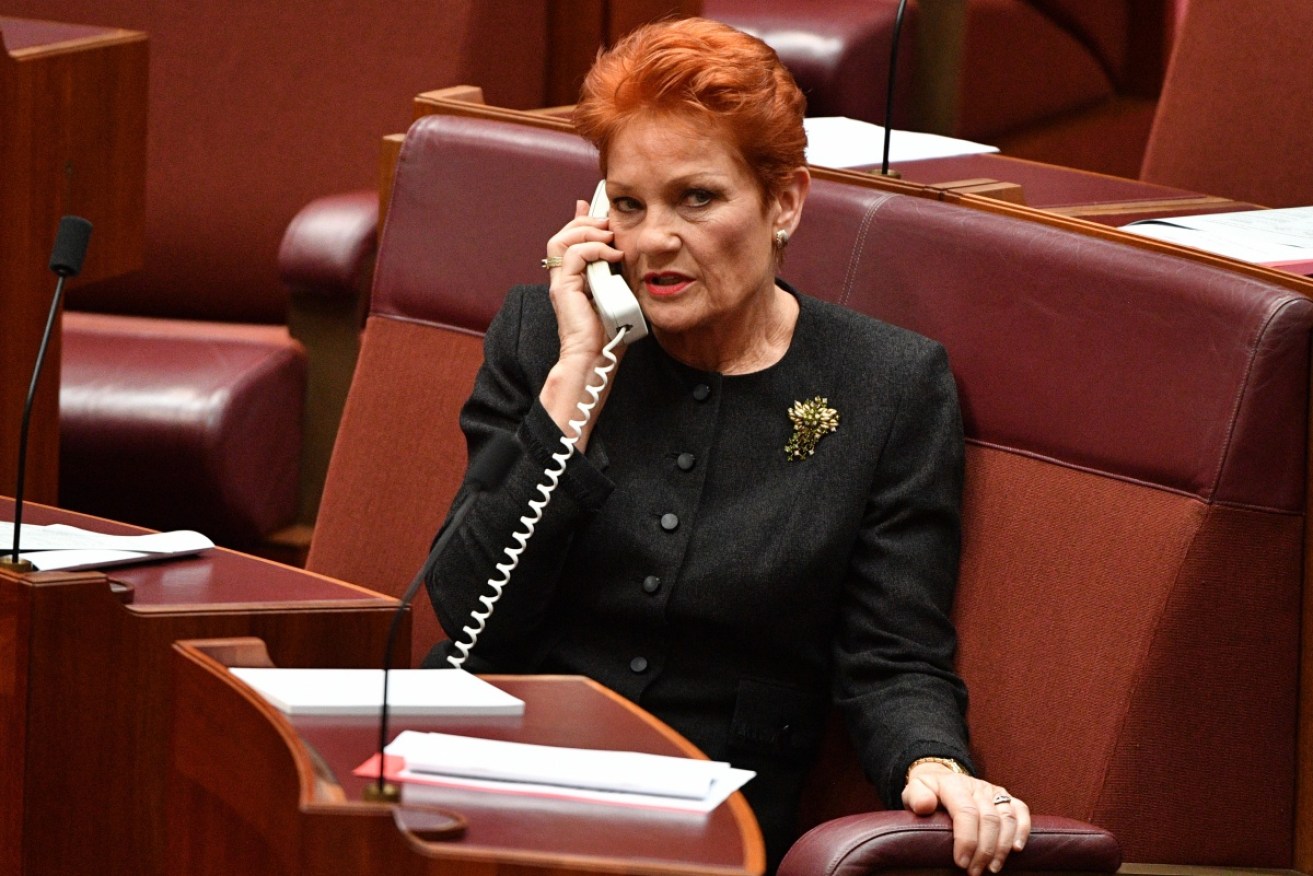Australia sees lowest population growth in 13 years


Pauline Hanson says she won't back the government's tax cut plan because she has not seen the draft legislation Photo: AAP
Australia’s population growth is dropping back towards its 20-year average of 1.4 per cent.
The latest Australian Bureau of Statistics figures showed the lowest December quarter growth in 13 years and the lowest growth for any quarter since June 2006.
While growth for the 2017 calendar year rounds up to 1.6 per cent, our population in the first half of this financial year grew at an annualised rate of 1.4 per cent – the average of the past two decades.
No doubt it’s pure coincidence that on the day Pauline Hanson voted for the government’s income tax package, Australia’s net overseas migration (NOM) hit a multi-year low. Reducing immigration is a core One Nation demand of the government in return for her vote.
One quarter does not an annual trend make, especially when the biggest single influence on the number was an uptick in the net overseas departures component. At the same time though, the full impact of government policy to reduce NOM is yet to be felt.
As previously reported, the government has cut back on the number of permanent skilled visas, fiddled the make up of those visas to include New Zealanders who are already here, reduced the number of foreign student visas offered to students who are actually overseas and its temporary work visa changes are seeing fewer applications. The anecdotal evidence from practitioners is that visa processing is taking longer and a higher percentage are being rejected.
NOM for the year was 240,400 – a rise of 1.4 per cent. The ABS counted a population increase in the December quarter of 68,700, taking the 2017 increase to 388,000. Of the December quarter growth, NOM contributed 35,941.
Sydney and Melbourne continue to attract the overwhelming majority of international migrants, but a rolling 12-month graph by property analyst Pete Wargent shows the downturn.

The 2017 demographic figures were but one of a rich crop of statistics today.
Detailed labour force figures underlined the broken nexus between lower unemployment and wages growth.
Greater Sydney, which includes the relatively high unemployment area of the Central Coast, had an unemployment rate of 4.2 per cent. Over the past year, Greater Sydney’s unemployment rate has averaged a smidge under 4.5 per cent – well under the purported “full employment” level of 5 per cent that used to be regarded as a trigger for faster wages growth. It’s not happening.
The May quarter jobs numbers contained a surprise for those who believed Australian manufacturing was dead. For the year to the end of May, manufacturing was the strongest source of new jobs – up 63,100 – and was the second strongest for the quarter behind a public administration surge of nearly 89,000.

And, yes, there was that Senate vote on the government’s income tax cut package. Numerous fibs and distortions have been trotted out to justify flattening our progressive income tax system, but the prize comment goes to Ms Hanson for her:
“Do you really think that those on $200,000 – and (Labor MPs) are making more than that – a $7000 tax cut is going to make a big difference to them? It is not.”
To put a little context on that remark, in round numbers, the 2024 tax package will deliver the equivalent of a $14,000 pre-tax pay rise for someone on $200,000.
Ms Hanson has come a long way from the fish and chip shop.








